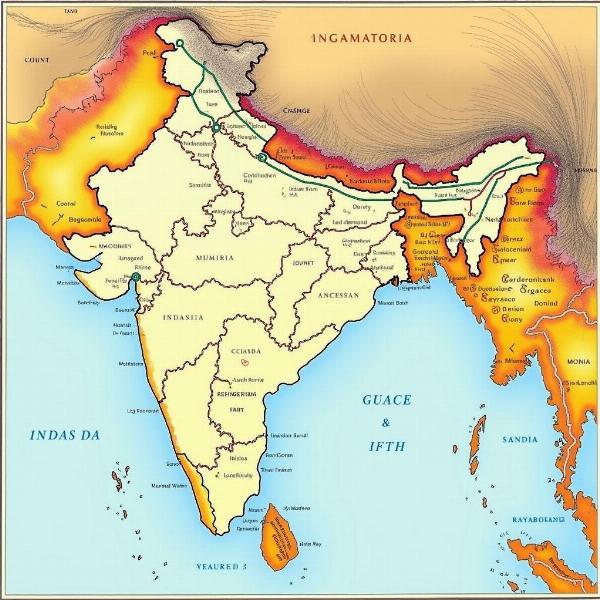Eyre, a term not commonly used in everyday Hindi, often leaves people searching for its meaning. Understanding the meaning of “eyre” in a Hindi context requires delving into its historical and legal origins. This article explores the different facets of “eyre,” its historical significance, and provides practical examples to clarify its usage.
Understanding the Historical Context of “Eyre”
Historically, “eyre” refers to a circuit court held by judges travelling through different parts of England. This practice dates back to the medieval period. While the term isn’t directly translated into a single Hindi word, it can be understood within the context of Indian legal systems. Think of it as a mobile court or a judicial circuit. The concept is similar to the Lok Adalat (People’s Court) in India, which aims to provide accessible justice in remote areas. This travelling court system ensured that justice reached even the farthest corners of the kingdom.
“Eyre” in Legal Terminology
In legal parlance, “eyre” represents a specific type of judicial visitation. While not a common term in modern Indian law, understanding its meaning can be crucial for historical and comparative legal studies. The term relates to the inspection and oversight of legal procedures. Imagine a high-ranking judge visiting different courts to ensure they adhere to the established legal framework. This resonates with the periodic inspections carried out by higher judicial authorities in India to maintain quality and consistency in the legal system.
Practical Examples of “Eyre”
While “eyre” might not be part of your daily Hindi vocabulary, understanding its meaning can enrich your understanding of legal history and comparative legal systems. For instance, historical texts referring to British India might mention “eyre” in the context of judicial administration. Imagine reading about a British judge travelling across India, holding court in different provinces. This signifies the implementation of the “eyre” system during the colonial era.
 Eyre Practical Examples
Eyre Practical Examples
“Eyre” and its Relevance to Modern India
Even though the system of “eyre” as practiced in medieval England no longer exists in India, the underlying principle of accessible justice remains relevant. The Indian legal system continuously strives to reach remote and marginalized communities. This echoes the spirit of the “eyre” system, ensuring that justice is not confined to urban centers.
How is “Eyre” Different from Regular Courts?
The key distinction lies in the mobility of the court. While regular courts operate from fixed locations, the “eyre” was itinerant, travelling to different regions. This facilitated access to justice for those living far from established court centers.
Conclusion
“Eyre,” though not a commonly used Hindi word, holds historical and legal significance. Understanding its meaning offers insights into the evolution of legal systems and the enduring pursuit of accessible justice. While the travelling courts of old may be gone, the principles they embodied continue to shape the modern legal landscape.
FAQ
- What is the closest Hindi translation of “eyre”? There isn’t a single, perfect Hindi equivalent. However, the concept aligns with mobile courts or judicial circuits.
- Is “eyre” still relevant in modern India? The practice of travelling courts in the traditional sense no longer exists. However, the underlying principle of accessible justice remains a cornerstone of the Indian legal system.
- Where can I learn more about the historical context of “eyre”? Historical legal texts and resources focusing on the medieval English and British colonial periods can provide further insights.
- Why is it important to understand the meaning of “eyre”? Understanding “eyre” enhances your comprehension of legal history and comparative legal studies, particularly when encountering the term in historical documents.
- How does “eyre” relate to the Indian legal system? The concept of bringing justice to remote areas resonates with initiatives like the Lok Adalat system in India.
- What is the significance of “eyre” in British India? “Eyre” represented a key aspect of judicial administration during the British Raj, facilitating legal oversight across vast territories.
- What is the main difference between “eyre” and stationary courts? The primary difference is the mobility of the “eyre,” allowing it to reach remote populations, unlike stationary courts.
Meaning-Hindi.in offers expert translation services in Hindi and a wide range of other languages. We specialize in legal, business, technical, website, and educational document translation, ensuring accuracy and cultural sensitivity. Whether you need a document translated quickly or require specialized expertise, our team is here to assist you. Contact us today for all your translation needs at [email protected] or call us at +91 11-4502-7584. Meaning-Hindi.in is your trusted partner for bridging language barriers.